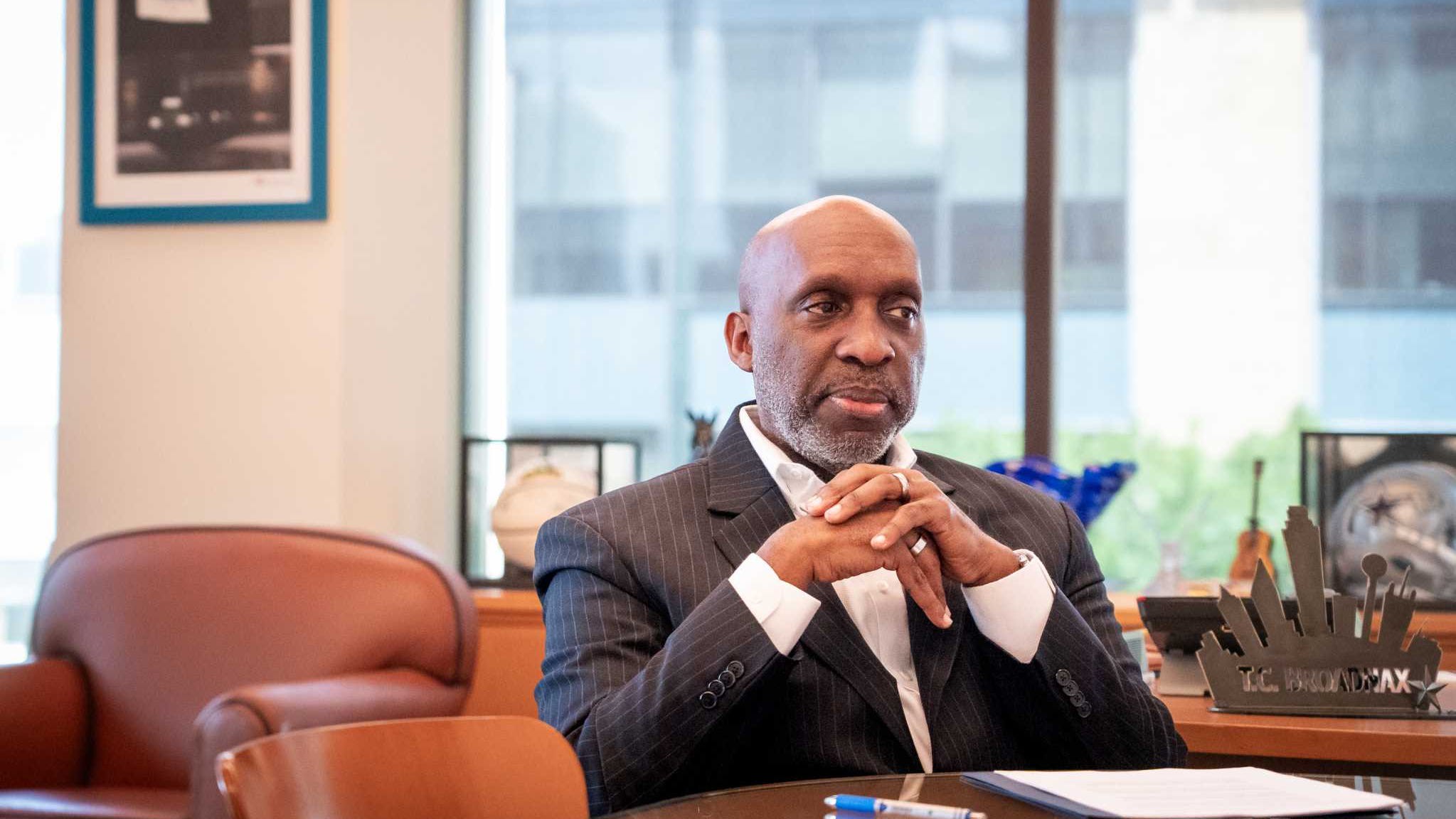politics
City manager's proposed Austin budget excludes a tax-rate election, mayor considers options
Austin's city manager on Friday released his proposed budget for next year. Questions still loom over whether city leaders will call a special tax election.
Published July 12, 2025 at 6:59pm

After months of anticipation amid a historic financial crunch, Austin City Manager T.C. Broadnax late Friday released his proposed budget for the coming fiscal year. The $6.3 billion spending plan is balanced, but relies on a modest tax increase and notable cuts to things like overtime pay for police and firefighters though it also includes raises for most city employees. Questions still loom over whether city leaders will call a special tax election so they may avoid some cuts or fund major community priorities.
“Balancing the budget with a shortfall in revenue while investing in key areas was made possible by a close and critical look at all spending, making reductions to realize savings where appropriate and in a way that does not impact important services,” the city manager wrote in a cover letter for his proposed budget.
Austin officials have for months expected to face a deficit of about $33 million, prompting conversations about spending cuts and debates over whether to ask voters for help in an election this fall. A convergence of political and economic factors have forced leaders to rethink how they might fund city services moving forward.
Despite the crunch, the price tag of Broadnax's proposed budget would make it the largest in Austin's history.
In the document, Broadnax stops short of recommending a tax-rate election, instead suggesting the City Council adopt a more modest property tax increase and reallocate millions of dollars to keep costs down.
The spending plan proposes raising 3.5% more tax revenue over the previous year. That would translate to a property tax increase of about $155 for the median Austin homeowner whose property is valued at about $503,000.
Mayor Kirk Watson in a Saturday morning memo suggested the City Council may instead choose to “keep (their) options open” as they advance through the budgeting process and that he would ask Broadnax to provide alternative proposals.
“Over the next couple of weeks, we will have conversations about how to navigate best the current financial situation the city is facing. I believe we must consider going to the voters with a TRE,” or tax-rate election, Watson wrote.
The budget comprises the general fund, which supports core city services like public safety and parks; and enterprise funds, which are largely dependent on their own revenue and make up the bulk of the total budget. They include departments like Austin Energy, Austin Water and Austin-Bergstrom International Airport.
Broadnax set the proposed budget for the general fund, which is where most of the city’s property and sales tax dollars are spent, at $1.5 billion – about a 5% increase from the previous year. The proposed budget shuffles more than $19 million in the general fund through cost cuts and “a careful review of operational needs and spending patterns.”
“These savings were reallocated within the General Fund to support priority areas,” the document reads. The cuts include a restructuring of police and fire staffing models to cut down on overtime costs by more than $17 million.
Under the proposal, civilian city employees would get a 4% raise, police officers a 6% raise; and EMS personnel a 3% raise. A raise for Fire Department employees has not yet been proposed as city management will soon enter labor contract negotiations with the firefighters union.
The proposed spending plan also includes a 42-cent increase to the minimum wage for city employees, a $12.5 million infusion into the Homeless Strategy Office; and $4 million for emergency rental assistance.
Austinites would likely pay more for water but less for electricity under the proposal. While Austin Energy’s fees would drop slightly, decreasing the average bill by about $5 per month, a water rate increase would raise the average bill by just under $9 per month.
The City Council typically makes a number of amendments and changes to the city manager's proposed budget before taking a vote, which is scheduled for August.
A state-imposed property tax cap, stagnant appraisals, expiring COVID-19 relief funding, volatile sales tax revenues; and a possible decline in federal support under the Trump administration have coalesced to weaken Austin’s financial outlook. Watson in a March speech described the situation as “budget asteroids that have been on a collision course for some time, and they have finally arrived at the point of impact.”
The city’s fiscal year starts in October and runs through the end of September.
As the deficit loomed, Broadnax earlier this year directed city departments to identify areas of their budget that would be candidates for the chopping block. The budget office predicted the $33.4 million expected deficit in fiscal year 2025-26 would grow to up to $80 million in five years.
The city's foremost funding hurdle stems from a 2019 law that limits the amount of additional property taxes a local government can levy each year to support its operations. Since that law was signed, cities are only able to collect 3.5% more property tax revenue than the previous year (not including new properties on the appraisal rolls) unless they get voter approval.
Previously, local taxing entities could collect up to 8% more revenue year-over-year before voters had the option to petition for a rollback election.
Since 2021, the city has filled some of the fiscal gap resulting from the tax cap with federal pandemic relief dollars from the American Rescue Plan Act, but those funds have already been spent or encumbered. The City Council opted to designate about half of the $188 million from the program to homelessness intervention.
Broadnax will present the budget proposal to City Council during a work session session on Tuesday that kicks off at 9 a.m.

